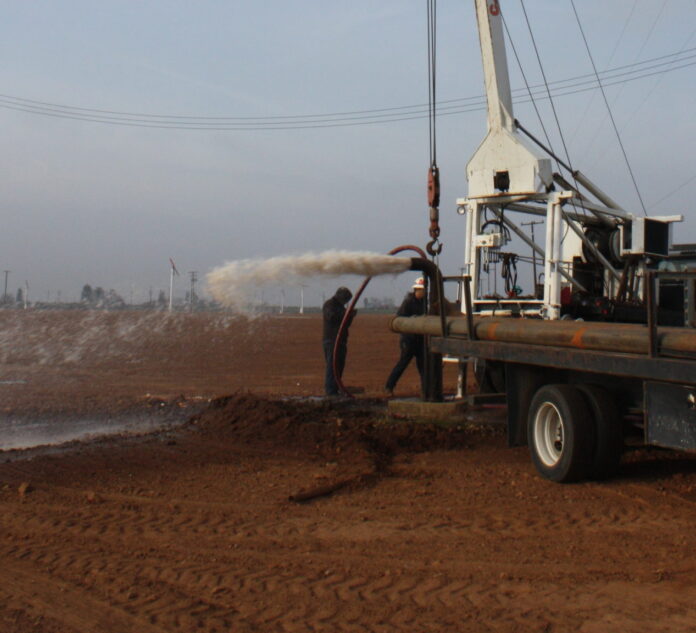The Tulare Irrigation District held its board of directors meeting on Tuesday, August 9, 2022 remotely by Zoom. General Manager Aaron Fukuda made the call to meet remotely as some folks have been exposed to the, well you know what. And of course we hope and pray they quickly recover fully. The before parts of the meetings can be the most fun. Listening in on the banter and synopsis of what folks have been up to for the past month before the gavel falls and the official public meeting begins reminds one this water thing is about really about people. Water is about growing crops, growing crops is about feeding people. So in the end these meetings are about people.
The Meeting
Chairman David Bixler called the meeting at 9:05am and there were no corrections or changes to the agenda. During public comment I told the board Fukuda has been really helpful in answering questions. Hope I didn’t sound like a butt kisser, but the fact is Fukuda is good at returning phone calls and sometimes, most times that’s a valuable skill.
Water Report
TID Water Master Marco Crenshaw had something to report besides complete doom. There have been some summer storms that added at least a few acre feet this past month. That’s good because Director Dave Martin said looking at last month’s sorry water report scratched the cornea of his left eye. Those of you living in the Valley may have noticed some uncharacteristically humid days with clouds recently. Those ended up as rain in the Sierra. All the extra discomfort yielded more than just personal perspiration and some precipitation. But not much.
Reservoirs are down as one would expect this time of year regardless of hydrologic conditions. Between all of TID’s supply sources on the Friant Kern Canal and the Kaweah River, at this point if I heard correctly, the district doesn’t have enough water left to extend deliveries.
Something was said during this report that indicates a new paradigm. They were talking about carryover in the reservoirs and Crenshaw said hopefully there will be plenty of water but without spills. He corrected himself immediately saying spills will be welcome even if it means some loss of carryover. It is estimated the upcoming water year will have to be huge to fill the reservoirs in California just make up for all the releases under the current operating parameters. It doesn’t appear reservoirs are being maintained for water storage during times of drought, but rather for some flood control and environmental releases. Recharge is now on the pantheon of beneficial water usage whether the state’s water code acknowledges this or not.
Fukuda showed a chart showing reservoir levels across the state. He said while there is a 30 percent Class I allocation on the Friant system there are agreements in place with Lindsay Strathmore Irrigation District and that will impact how much of that supply will gets to TID growers. He also said there have been tremendous debris flows in the Klamath River system due to fires.
O&M
Superintendent Wayne Fox reported weed control has been one of the big focus on system maintenance. He said it can be cheaper to doze a ditch bottom for growth than spray weeds. The dry conditions have allowed some gate and trash work earlier than usual. Someone or somebodies in Tulare County have been dumping concrete on the roadsides and in some of the basins. It is bad news when it blocks roads or flows and safety issues, but it is free rip rap material.
CMA
Fukuda said Delano Earlimart ID is investing in recharge projects. DEID has reached out to TID and its board and management took a tour of TID’s facilities. Things like proper slope ratio and trying to keep as much fine soil out as possible are lessons learned in basin construction maintenance. Back when the Sino Cooties first struck the districts began discussing how they could plan for a lack of skilled employees. You can’t have half your ditch tenders out sick and call the temporary staffing agency for help. However, Director Rick Borges said he actually was able to hire a guy with irrigation and tractor skills off of the employment site Indeed. Good for him.
TID and DEID want to take this cooperation further than talk. The proposed agreement includes a 30-day notice to opt out and the right to decline service requests or offers. Staff and equipment are included. There is a TID scraper working on a DEID recharge basin and Fukuda asked the board to consider entering into this cooperative maintenance agreement. The board agreed.
Finances
Controller Kathi Artis gave the financial reports. One bill was $45k to Stantec Engineering for water marketing. Turns out this is a semiannual payment that is reimbursed by the US Bureau of Reclamation. Another bill out of the ordinary was for the Okieville recharge basin permit from California Department of Fish & Wildlife. It cost TID $5,000 because the basin is near Packwood Creek. Who knows what critters and creatures, flora and fauna lurks there? The board approved the reports and paid its bills.
Prop 218
Fukuda gave the board an update on the 218 election. Ballots were mailed July 13th and there were only 11 bad addresses out of more than 1,400 sent. So far 210 have been returned. Fukuda has been fielding calls from growers with questions but one has to be very careful about what is said. A district engaged in a 218 election can’t advocate for passage, only educate. He may schedule grower meetings and he believes that needs to happen as there are many moving parts to this. Proposition 218 was passed to give taxpayers say so over assessment increases. TID is in the midst of such an election. We’ll see what happens.
Staff Reports
Fukuda is also the manager of the Mid Kaweah Groundwater Sustainability Agency and reported some serious work and energy to get the Groundwater Sustainability Plan revisions turned in on deadline. This included a First Amended Coordination Agreement. He said evidence for subsidence with override water levels as a trigger. Borges asked how long DWR has to get the reviews back. Fukuda said DWR’s Paul Gosselin has hopes for a turn around by the end of the year. Martin asked since there is a 45-day public comment will DWR wait until after then to start the review? That doesn’t sound doable. Fukuda pointed out DWR staff took their vacations before the deadline and some even called in while on vacation. He said he’ll contact Gosselin and ask when the actual review starts.
SGMA
There are two policies being addressed: dairies and fallow fields. The Four Creeks Dairy Model of half an acre foot per acre will be assigned to dairies and soil health for fallowed fields.
The dashboard for the Kaweah Subbasin is out and education on how to use it is going well. James Fisher has been instrumental in helping make this real. Provost & Pritchard has also been involved as well as Land IQ and it looks like the information is starting to help. Martin said the dashboard was pretty user friendly. Somehow Borges has been unofficially nominated to be the new “tech guy” at TID. (He’s not tech savvy but happy to help anyway.) So, Fukuda told Martin to call Borges for help if it ever becomes unfriendly.
Friant
Construction has started on the Friant Kern Canal repairs and material had to be taken that would have gone to building up the existing bank to increase headboard. There have been change orders. There will be a retreat November 14-17th for the Friant board and both Borges and Fukuda urged the board to attend. It is a lot of work. From sunup to sundown Friant members hammer out the direction of the JPA for the coming year.
McKay Point
The McKay Point Seaborn Reservoir project didn’t receive funding from FEMA. This was a shock to the consultants and the Cal OES. It didn’t meet the cost benefit ratio. There will be some follow up in this matter. At McKay Point Tulare County has reviewed the EIR and are analyzing the comments. This phase of the program should wind up in October. The slurry wall design is still being updated.
Legislation
Fukuda next spoke about AB 2201 and said it is not heading in the right direction. Ruth Dalquist of the UC Cooperative Extension joined the team and has been trying to get some amendments. There was a meeting with the author, Assemblyman Steve Bennett of Ventura’s staff. Fukuda said staff was entrenched and only wants a win, but not a win/win. Local Senators Melissa Hurtado and Anna Caballero, as well as ACWA are opposed to the bill because they believe it will harm small farmers and the local economy. To learn more about AB 2201 go here: https://waterwrights.net/ab-2201-do-we-need-it-august-4-2022/
Bennett’s staff says it has been reaching out to engineering associations that have indicated they can handle the reporting about new wells impacts on existing wells and subsidence. Under the new regulations AB 2201 would add to SGMA the requirement a new well permit would have to have a conclusive report from an engineer or hydrogeologist that the new well won’t harm existing wells or cause subsidence. If Bennett has done this outreach it will be the first for AB 2201. None of the Counties or GSAs in the San Joaquin Valley were asked if this bill was needed or how to implement it into the existing conditions. And as for asking an engineering association: what kind of association would be worth its salt if it were to deny the possibility of a potentially very lucrative income stream to its members?
outreach it will be the first for AB 2201. None of the Counties or GSAs in the San Joaquin Valley were asked if this bill was needed or how to implement it into the existing conditions. And as for asking an engineering association: what kind of association would be worth its salt if it were to deny the possibility of a potentially very lucrative income stream to its members?
I shall now editorialize. Yes, there is engineering technology and enough practice experience to produce a “conclusive” report regarding a new well’s impacts. But at what cost? For an engineer to state and put his or her stamp on a conclusive report would open them up to liability issues. There is some doubt amongst the professionals I’ve spoken with that insurers would provide coverage for this. Therefore the extent of the study would have to be vast to provide the CYA needed. The cost to the applicant would soon balloon to the tens of thousands of dollars at a minimum.
It’s almost like a legislator with support from organizations unfriendly to agriculture in California, representing a district from out of the area, not involved in production agriculture in the San Joaquin Valley would write a bill that would prevent new wells from being permitted by making them so costly it wouldn’t be feasible.
That might not be Bennett’s goal for AB 2201, maybe he wants to prevent foreign investors with ties to the Chinese Communist Party from purchasing farmland next to sensitive military areas by making it almost impossibly difficult to drill a new well. But in doing so he’s gutting the small farmers in the San Joaquin Valley and harming the very DACs who depend on ag as a source of income. That’s an unintended consequence, hopefully unintended one hopes.
Other Reports
I believe Fukuda was attending an ACWA regional meeting where DeeDee Adamo from the State Water Resources Control Board said if the State Board has to take over a subbasin because the GSP hasn’t been approved its goal will be to return it to local control as soon as possible. She said there is a “good actor” provision that could separate an area within a subbasin with good SGMA compliance from an area with poor SGMA compliance from State Board control. There is also a SGMA Success paper being prepared for a future ACWA gathering.
Fukuda has also been participating in the 2023 water plan update with DWR. On a recent call the plan update was all about racial equity. There was a lady speaking for DWR who said DWR staff is now preparing a data set on how racially equitable IDs are.
DWR is now tracking and compiling data on irrigation and water district board members based on race and sex. Racially there is only white and nonwhite and if a director’s name sounds male that is how that is how their sex is determined. Fukuda said this engendered a feeling of rage within him when the presenter said board members can not represent fairly if they are white males. Fukuda objected citing the tough decisions his board has made for the benefit of disadvantaged communities. The woman presenting said Fukuda’s negative reaction to her statement only proves how he’s been fooled. ACWA is also against this. For more on this subject go here: https://waterwrights.net/state-board-racial-equity-workshop-july-29-2022/
Since special district directors are elected officials and take the same oath of office as all elected officials from the city council member to the president of the United States it would be interesting to see what other class of elected officials in California are being profiled by an unelected state agency.
Board Actions
In order to set assessments the TID board must sit as a Board of Equalization. Fukuda said the board must establish now it will sit as a BoE for a 10-day period starting September 13th. This has to happen whether or not the 218 election passes. The board approved.
There is an application for an Integrated Water Resource Management Program grant due next week. After speaking with Provost & Pritchard they felt there isn’t enough time to write a viable grant application and the district would be spending money on a maybe 50/50 chance of getting any return. However, this could be a two part grant and having the resolution ready now could add a good deal of flexibility in the future. So the board approved Resolution No. 22-13 to be ready for the possibility.
Next there was an update on the Consumer Price Index and a Cost of Living Adjustment as it applies to district employees. After speaking with a human resources attorney an additional eight days of administrative leave could be offered employees. This time would take place between Christmas and New Year’s Day. This paid time off would equal a COLA increase. This would save the district about $2,000 per day in fixed overhead during a time of year when, well, not a lot is going on.
Of course this isn’t completely shut and dried – what if there is a flood release? How does this impact folks retiring or some such similar bounce in the lane? The board liked the extra vacation and I do too. When I started covering water you couldn’t find a live soul at a district or most anything ag related. Very little work takes place due to the weather and the growing cycle and with family gatherings and children out of school this could be a very welcomed benefit. I believe Fukuda said this would be tried for one year to see how it goes.
Director Mike Thomas said he shuts his ranch down during that time and everyone agreed this is a good thing. Borges asked if there is a flood event will the appropriate staff be in place to come back to work? This can be worked out. Many other districts and other companies have been doing this vacation time during the holidays. The board agreed.
Martin reported on the Mid Kaweah GSA and the past meeting was only about the GSP rewrite.
Borges reported the Kaweah River Association elections will be in October. He asked when the district makes it choices for KRA representation. Fukuda said that is a resolution that takes place at the January meeting. Borges said there was a report about crop and ranch management at the Kaweah Basin Water Quality Association that could help folks to keep compliant with regulatory matters. They will have an in person annual meeting this year and vendors will be available and offset costs. Borges said People’s Ditch and Farmers Ditch Company will be forming a water conservation district to represent that footprint. Fukuda said that area would become a special district with the related powers, obligations and benefits that come with it. That will be interesting. Like a volcano forming a new island out in the Pacific.
Borges reported on expanding the boundaries of one of the organizations he serves to provide more drinking water for folks with bad wells or water sources. If you’re a member of an NGO reading this and you provide drinking water or funding for folks who need it let me know. I don’t know of anyone but ag based groups providing actual water to the DACs and I want to give credit where due.
With that the meeting went into closed session for some legal wrangling fun at 11:10am. A relatively short meeting for TID. Go be good to each other and yourself.
DISCLAIMER OF RESPONSIBILITY; Waterwrights strives to provide clients with the most complete, up-to-date, and accurate information available. Nevertheless, Waterwrights does not serve as a guarantor of the accuracy or completeness of the information provided, and specifically disclaims any and all responsibility for information that is not accurate, up-to-date, or complete. Waterwrights’ clients therefore rely on the accuracy, completeness and timeliness of information from Waterwrights entirely at their own risk. The opinions expressed in this report are those of the author and do not represent any advertisers or third parties.
ALL RIGHTS RESERVED. Copyright 2022 by WaterWrights.net/DAW
TULARE IRRIGATION DISTRICT
6826 Ave 240, Tulare, CA 93274 Office: 559/686-3425
Board: David G. Bixler- President, Richard S. Borges, Jr.-Vice President, Scott Rogers, Dave Martin & Michael Thomas
Staff: Aaron Fukuda-General Manager, Jeremy Barroll-Engineer, Kathi Artis–District Controller, Wayne Fox–Superintendent, Marco Crenshaw–District Watermaster & Alex Peltzer-Attorney.
About: The Tulare Irrigation District was organized September 21, 1889. The original proposal for the formation of an irrigation district covering 219,000 acres, extending from the Sierra Nevada foothills to Tulare Lake, was eventually reduced to 32,500 acres. The District continued in this status until January of 1948 when the so-called Kaweah Lands” (approximately 11,000 acres) were annexed. In October of 1948, approximately 31,000 acres, compromising the area served by the Packwood Canal Company were annexed to the District. A U.S. Bureau of Reclamation contract was signed in 1950 providing an annual supply of 30,000 acre-feet of Class 1 water, and up to 141,000 acre-feet of Class 2 water from the Friant-Kern Canal. The District and the Kaweah Delta Water Conservation District have coordinated efforts to enhance the recharge of groundwater within the Kaweah Basin. During high flow times KDWCD may use the recharge basins with the District for recharge purposes. Further, KDWCD has historically provided for a financial incentive program through which the District sustains the level of groundwater recharge from supply sources into the District. This historical program was recently reinstated by both districts in lieu of the District’s plans to concrete-line this canal to conserve the surface water. TID is a member of the Mid Kaweah GSA DWR#-5-022.11

































